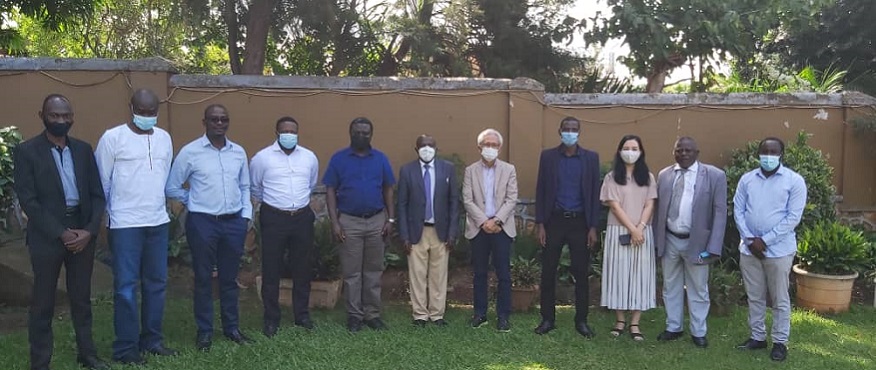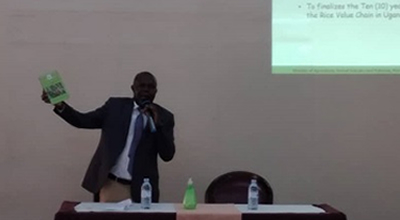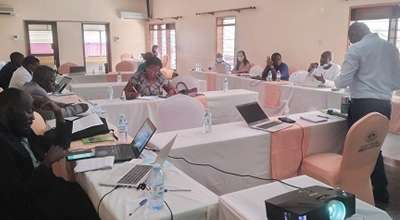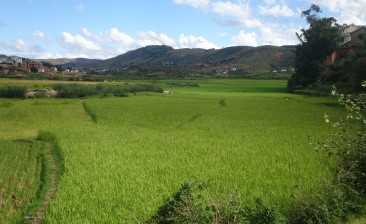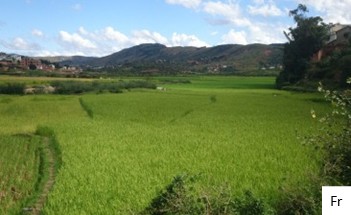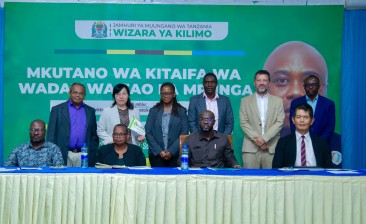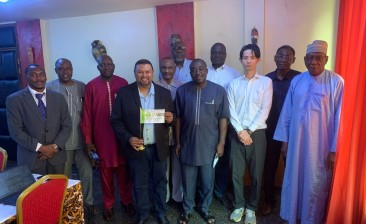Uganda, December 2021
CARD Working Week on drafting Second National Rice Development Strategies in Uganda
Rice is fast becoming an important staple food crop in Uganda. Uganda joined CARD initiative in 2008 and developed its first phase of National Rice Development Strategy (NRDS-I; 2008-2018) with a major objective of increasing local rice production. Yet gap between the local production and market demand has widened. Annual importation volume has tripled from 61,363 tons in 2008 to 184,262 tons in 2018; while the local production increased only from 157,000 tons to 247,000 tons. Data from 2001 rice production suggests that while about 26% of local rice is produced in upland ecosystem, about 66% is produced in lowland ecosystem.
Following the extension of the CARD initiative into a second phase (2019-2030); Government of Uganda (GoU) expressed its willingness to continue its partnerships and has since set up a taskforce for renewing its national strategies for rice sub-sector development through NRDS-II. The taskforce subsequently initiated the process of holding discussions with key rice industry actors and drawing baselines and targets for NRDS-II. However, colloquial evidences on rice production and consumption data from across the various institutions and industry players held inconsistencies. In addition to such systemic challenges; since Uganda’s upland and lowland rice production ecosystems are highly subject to climate vagaries; the statistical interpretations of rice data have largely remained uncertain.
Besides such ambiguities in data, an intent of the taskforce to wait for finalization of country’s Agriculture Sector Strategic Plan (ASSP-III) so as to anchor rice sub-sector strategies on ASSP-III has also caused delays in completing the process of drafting the NRDS-II. Following recent validation and approval of ASSP-III, the taskforce had drafted the NRDS-II and shared with CARD Secretariat. Review of the NRDS-II draft prompted a need for thorough discussions with the taskforce on targets, strategic interventions and actions.
For the abovementioned purpose, a working week was organized by Ministry of Agriculture, Animal Industries and Fisheries (MAAIF) between 13th and 16th of December, 2021. The meeting was held at Sunset Hotel International in Jinja City in a hybrid mode wherein the taskforce members and other resource persons from the rice industry were present physically at the venue and Regional Consultant of CARD and JICA Advisor for MAAIF joined the discussions online.
CARD activity and the results
Representatives from MAAIF, Farmers’ union, AfricaRice, National Planning Authority, JICA and Uganda Bureau of Statistics (UBOS) participated through the working week. Regional Consultant of CARD provided technical assistance to the participants through a virtual mode. The primary objective of the working week was to peer-review and finalize the core elements of the NRDS-II strategic framework. The participants agreed that format of NRDS-II draft shall be simplified to reflect MAAIF’s standard documents and shall include a matrix of strategic interventions and strategic actions. While some participants preferred a process-based goals such as increase in productivity and quality of locally produced rice, many preferred to set a performance-based goal such as total rice production levels.
Using available data from UBOS on rice production, rice importation and rice consumption, and population; the consultant helped participants compute rate of increment in per capita rice consumption using trendlines. Based on projected population figures, the participants were then able to estimate the consumption requirements through the NRDS-II period. It was concluded that Uganda would need to increase its local rice production to 1,003,500 tons (before milling) by 2030. This would require more than 4-fold increase in production from the current level of 247,000 tons. The participants agreed to set such a performance-based target as the goal of NRDS-II.
The participants accordingly reviewed the key strategic objectives proposed in the draft and affirmed that productivity, quality and competitiveness of local rice production and strengthening coordination of stakeholders of the rice industry should be emphasized. Against each of the set objective, the participants identified major strategic interventions that would help realize the goal and key strategic actions that will be required to implement the NRDS-II. The participants also agreed to major indicators that could help track the progress on implementation of the proposed strategic actions. Based on mandates, performance, and human- and technical resources and capacities; the participants identified institutions/agencies/stakeholder organizations that could be held responsible for the execution of the proposed strategic actions.
The participants proposed that financing for implementation of the NRDS-II shall largely come from private stakeholders. It was further proposed that GoU and development partners shall mainly contribute to recruitment, recurring costs, and innovations. The taskforce agreed to develop competitive project ideas and proposals that could secure funding for the various stakeholders; soon after validation of the NRDS-II.
Way forward
The participants agreed to reflect the consensus made during the working week on the NRDS-II draft document through editing. Commissioner (Crops) of MAAIF shall constitute a small, core technical team for this purpose. The core team will be responsible for capturing the peer-reviewed goal, vision, objectives, targets, strategic interventions, actions, indicators and institutional responsibilities in the draft by the end of January, 2022. JICA agreed to financially support gatherings of the core team, if required. After finalization, the revised draft will be taken for validation with stakeholders through MAAIF management by first fortnight of February, 2022.
